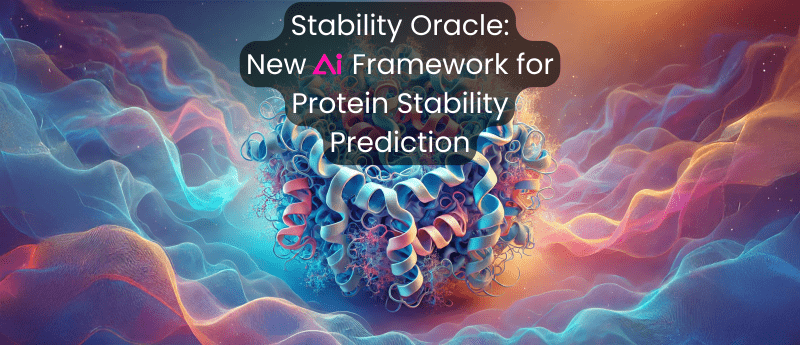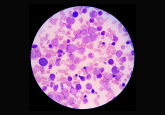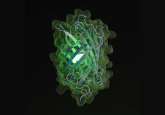Stability Oracle: New AI Framework for Protein Stability Prediction

In the evolving field of protein engineering, predicting the stability of proteins—especially how they behave after mutations—is a core challenge for both pharmaceutical and industrial biotechnology applications. A recent research study, led by scientists from the University of Texas (US) presents a new framework called Stability Oracle, a machine learning model that offers state-of-the-art performance in identifying stabilizing mutations, which can help enhance the stability of proteins. This research, published in Nature Communications, highlights several key innovations aimed at overcoming persistent challenges in computational protein stability prediction.
The Challenge of Protein Stability Prediction
Proteins, the molecular workhorses of biology, require structural stability to function properly.
Mutations in protein structures, such as amino acid substitutions, can either enhance or destabilize a protein’s stability. Accurately predicting these changes is critical for applications ranging from industrial enzymes to therapeutic biologics.
Traditional computational methods, such as physics-based models (e.g., Rosetta, FoldX), and shallow machine learning approaches have been widely used but often fall short in identifying stabilizing mutations. Most models tend to focus on destabilizing mutations, leaving stabilizing mutations largely underexplored.
The Stability Oracle framework tackles this gap, aiming to predict thermodynamic stability shifts due to single-point mutations.
Thermodynamic stability is essential because it determines the integrity of a protein’s structure under various conditions, which in turn affects its folding, unfolding, and overall functional stability. Engineering proteins with higher stability is crucial for developing biocatalysts and pharmaceutical biologics that perform efficiently and consistently in real-world conditions.
Stability Oracle: A Graph-Transformer Approach
The Stability Oracle framework leverages a graph-transformer architecture. Unlike conventional sequence-based models, which primarily use protein amino acid sequences for predictions, Stability Oracle incorporates structural features of proteins. The framework uses the geometric arrangement of atoms (the protein’s structure) to make more accurate predictions about how mutations will impact stability.
Key innovations of Stability Oracle include:
- Thermodynamic Permutations (TP): TP expands the dataset by generating additional valid energy measurements, helping the model better predict stabilizing mutations despite limited data.
- Structural Amino Acid Embeddings: The model creates representations of amino acids based on their surrounding structure, allowing it to predict mutation effects without generating new protein structures for each mutation.
- Data Curation for Generalization: The training and test datasets were carefully organized to prevent overlap, ensuring the model can generalize its predictions to new, unseen proteins.
Improved Performance and Generalization
In their experiments, the researchers compared Stability Oracle with a variety of other stability prediction models. They report that despite using 2000 times fewer protein sequences for pre-training, Stability Oracle achieved better results than sequence based models due to its reliance on structural information.
The model was evaluated on several curated datasets, and it showed improvements across key metrics, such as precision, recall, and area under the receiver operating characteristic curve. For stabilizing mutations, the model demonstrated a 48% success rate in correctly identifying these mutations, a significant improvement over the ~20% success rate seen with other methods.
Applications and Future Directions
By refining the ability to predict stabilizing mutations, Stability Oracle offers potential benefits in several fields. In biotechnology, for example, stabilizing enzymes to function at higher temperatures could enhance industrial processes like biocatalysis, while in pharmaceuticals, stabilizing proteins could improve the shelf life and efficacy of biologic drugs.
The researchers suggest that their framework could be extended beyond protein stability, with potential applications in other areas of protein engineering, such as designing proteins with specific binding affinities or functional characteristics. By fine-tuning this structure-based transformer model to different protein phenotypes, Stability Oracle may help accelerate the development of new protein-based biotechnologies.
Conclusion
Stability Oracle’s graph-transformer framework addresses some of the long-standing challenges in protein stability prediction, particularly in identifying stabilizing mutations. While this model improves upon existing approaches, the researchers acknowledge that further experimentation, particularly with real-world data, will be needed to fully validate its potential in diverse applications.
Refer a colleague
Please enter your username and password below, if you are not yet a member of FMAI Hub remember you can register for free.



